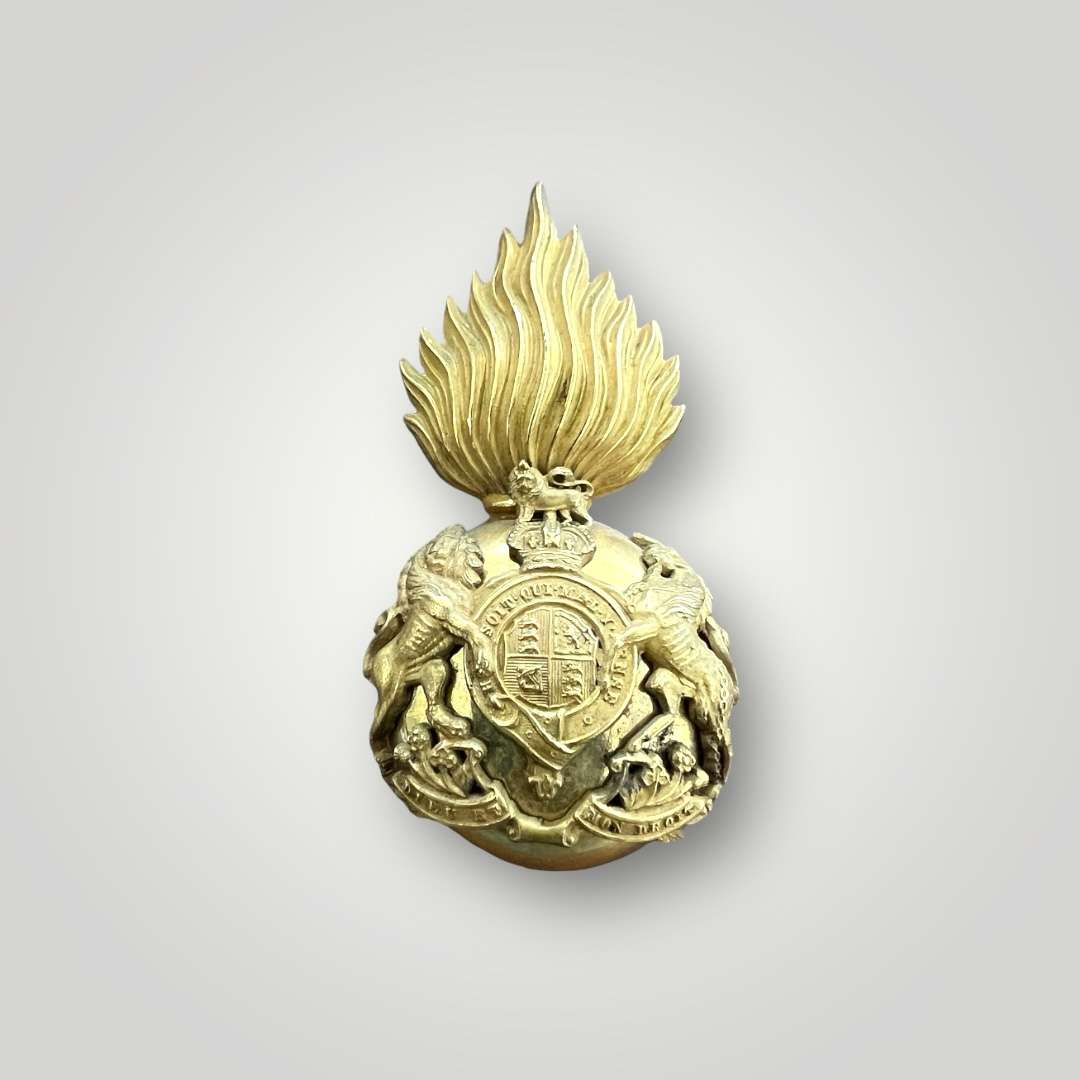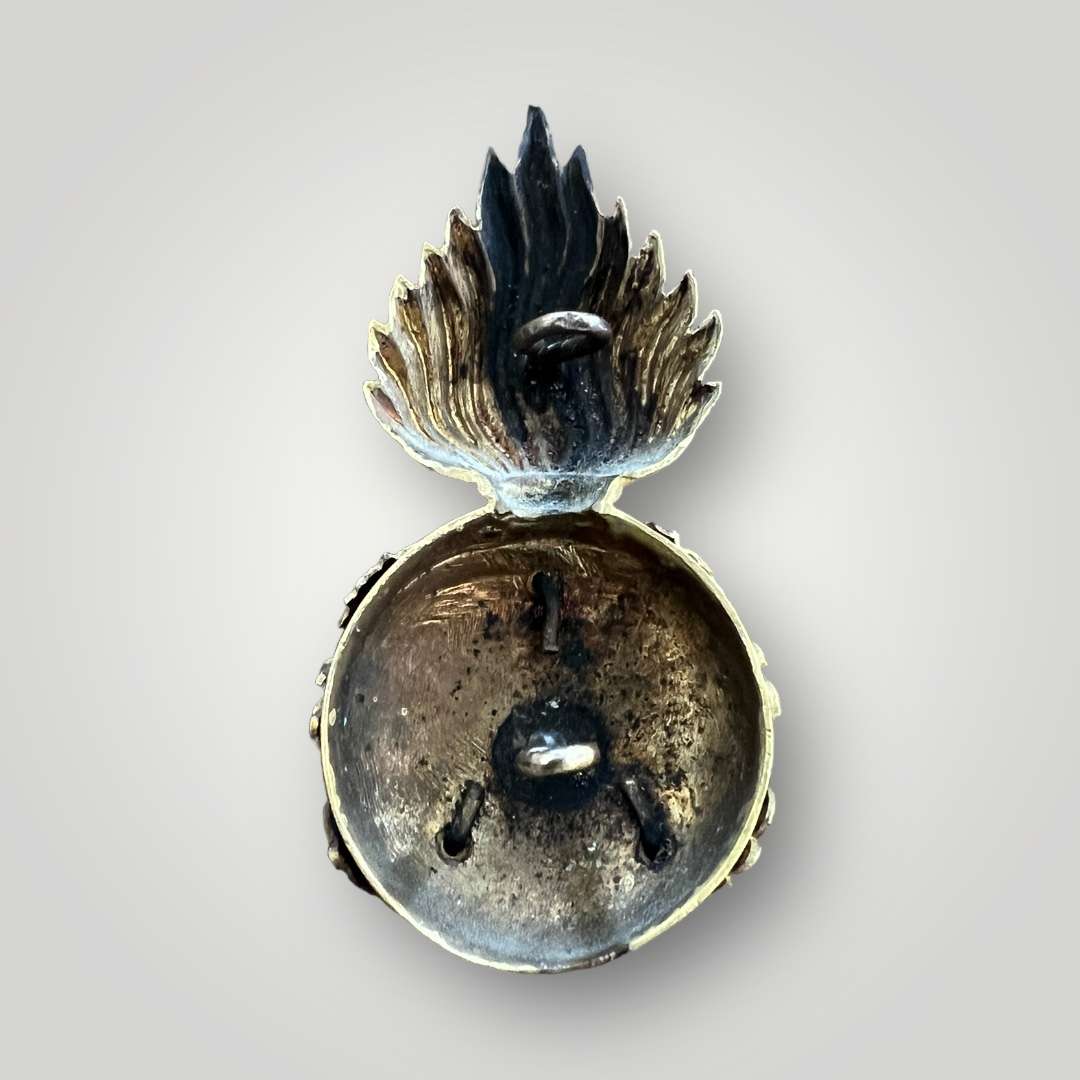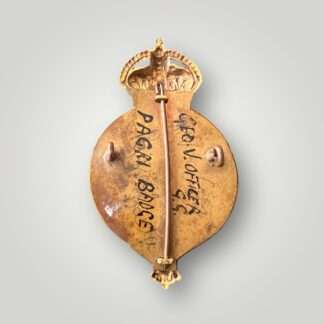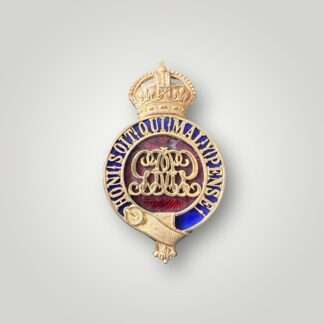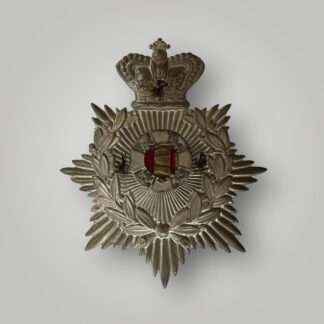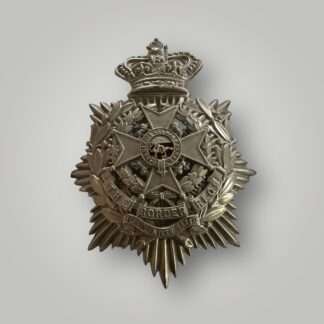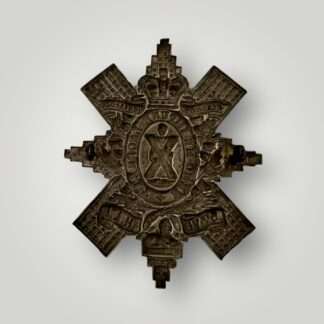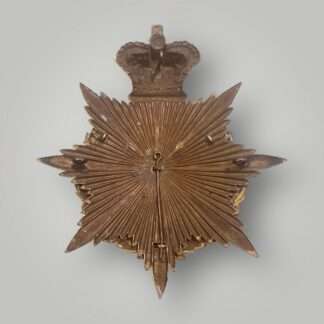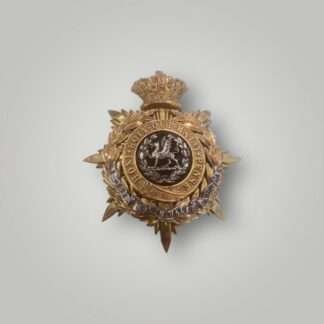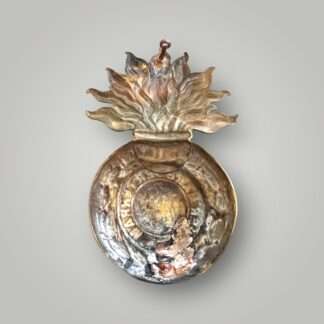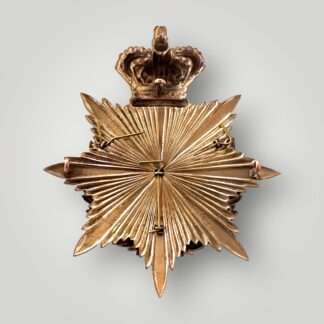Description
Royal Scot Fusiliers Brief History
The cap badge for the Royal Scots Fusiliers of the type which was in use from 1901 until 1959. The predecessor Regiment was raised in Scotland in 1678 by Charles Erskine, 5th Earl of Mar and known as Earl Mar’s Regiment of Foot. Erskine was loyal to the Stuarts and his Regiment was largely deployed in company detachments to garrison towns and as support to dragoons hunting out Covenanters. The Regiment initially supported James II but opted to serve William of Orange when James fled to Ireland. Early in its existence the Regiment was armed with “fusils” rather than the conventional matchlock, which may explain why in 1691 they became known as Colonel O’Farrell’s Fuziliers. In 1707 they became the North British Fuziliers, and in 1713 the Royal North British Fuziliers. In 1747 the Regiment was ranked 21st Regiment of Foot, in 1751 being formally named 21st Regiment of Foot (or Royal North British Fuziliers). In 1871 (or 1877 according to some sources) the Regiment was re-designated 21st (Royal Scots Fusiliers) Regiment of Foot. The Cardwell/Childers reforms of 1881 saw a further name change, now to the Royal Scots Fusiliers. At this time the Royal Arms replaced the regimental number on the ball of the grenade. In 1901 the crown above the Arms was replaced by the Royal Crest. The badge was some four times larger than those of other fusilier regiments, which, together with the Royal Arms, signified that the Regiment was the senior among fusilier units. The badge was generally worn with a 42nd, “government”, tartan backing, although pipers wore an Erskine patch. In 1958 the Regiment merged with the Highland Light Infantry (City of Glasgow Regiment) to form the Royal Highland Fusiliers, part of the Lowland Brigade, the regular battalions of which were expected to wear the Brigade badge. In 1969 the Brigade was broken up and the Regiment regained independence and a new badge as The Royal Highland Fusiliers (Princess Margaret’s Own Glasgow and Ayrshire Regiment). In 2006 the Royal Regiment of Scotland was formed, 2nd Battalion of which was named The Royal Highland Fusiliers, 2nd Battalion The Royal Regiment of Scotland, wearing the new Regiment’s badge with a white hackle.


